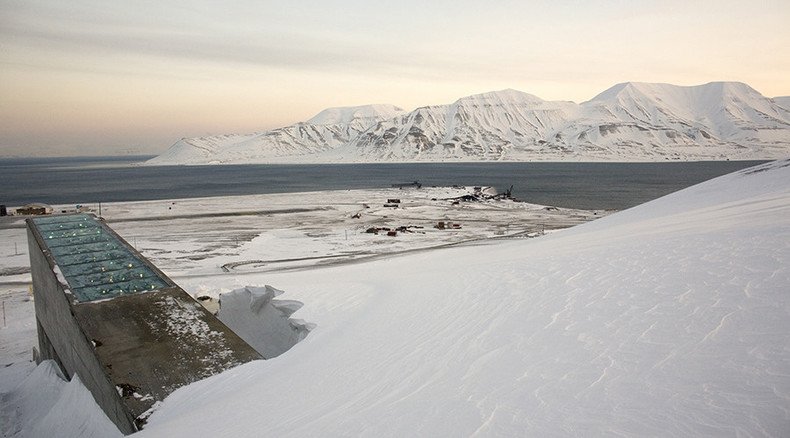‘Doomsday vault’ request: Scientists seek over 100,000 seed samples from Arctic bank for Middle East

A Lebanon-based seed bank formerly located in war-torn Syria has requested 116,000 crop samples from an international “doomsday vault” in Svalbard to re-establish the collection elsewhere. It is the first such request since the facility opened in 2008.
Forced from its research farm in Aleppo in 2012, the International Centre for Agricultural Research in Dry Areas’ (ICARDA), which provides seed stock for dry Middle Eastern countries, wants almost 130 boxes of seed samples out of the 325 it had deposited in the vault in recent years.
“The gene bank wants use to send some of the seeds back this autumn, to grow and harvest them. Then they want to send the new seeds up here again as a back-up,” Norway’s agriculture minister, Sylvi Listhaug, told VG newspaper. “They will be sent to other countries in the Middle East, since Syria is still affected by war, but for security reasons we will not say where.”
READ MORE: Frozen out: Russia protests to Norway over Svalbard travel restrictions
While the Norwegian minister has opted not to disclose the location to which the seeds are to be sent, the creator of Svalbard Global Seed Vault, Professor Cary Fowler, said in August that the center would reestablish its stocks in Morocco and Lebanon.
“[This centre] had one of the biggest and best collections of wheat, barley, chickpeas, lentils,” Fowler told Australia’s ABC News at the time. “It’s on the outskirts of Aleppo, Syria, and Aleppo is in deep trouble right now, with a huge amount of fighting going on. We don’t think that seed collection has been lost, as is, right there in Aleppo, but that could come any day now.”
After Aleppo fell to rebels in 2012, the center’s staff was forced to relocate to Beirut, where its headquarters are still based.
It is estimated that up to 87 percent of the Syria-grown seeds is now safely stored in a vault deep inside a mountain – the world’s largest facility of its kind – on Svalbard, a Norwegian island 1,300 kilometers (800 miles) from the North Pole.
According to Grethe Evjen, an expert at the Norwegian Agriculture Ministry, the samples will be sent once paperwork is completed, Reuters reported.
This is the first such “return-to-sender” mission in the Middle East since the Svalbard Global Seed Vault was launched in 2008. Since then it has collected 860,000 seed samples from gene banks from across the world, including North Korea and Iraq.
“This shows why it is so important to have a global seed bank like this, as a back-up when things occur in the world, and when there is a risk that important germs may be lost,” Listhaug told VG newspaper.
The seed vault in Svalbard is meant to ensure world food security and biodiversity in case of natural disasters, climate change, and particularly nuclear wars.












